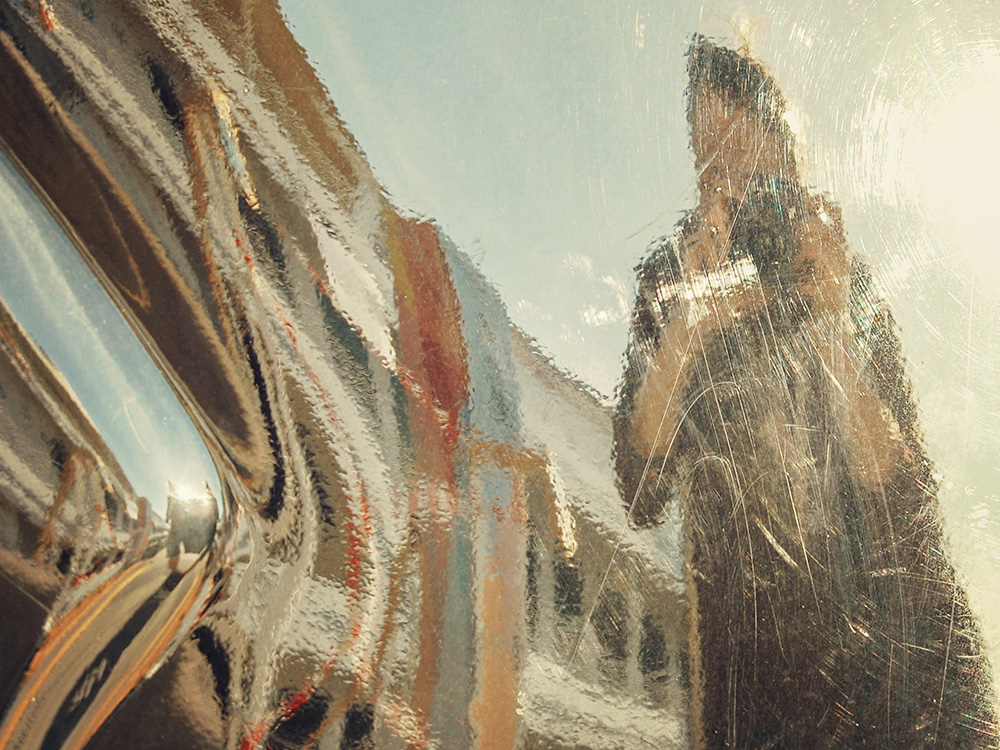Twenty-Fourth Sunday in Ordinary Time: Seeing without distortion
When was the last time you looked at yourself in a carnival mirror? The distortion we see comes from the physics of sight.The all-knowing internet explains that we see a person in the light that s/he reflects back to us. Obviously, this process depends on our eye as well as the light coming from the […]



When was the last time you looked at yourself in a carnival mirror? The distortion we see comes from the physics of sight.The all-knowing internet explains that we see a person in the light that s/he reflects back to us. Obviously, this process depends on our eye as well as the light coming from the other. I have astigmatism: my corneas are shaped differently, thus my uncorrected vision is distorted.
This junior-scientist information might illumine today’s Liturgy of the Word.
As Jesus and his disciples were walking along, Jesus asked what they thought of him. Perhaps his question came from his need to understand what they felt about him. It might also have been a setup for teaching: get the students to struggle to express their own answer and then draw them into dialogue.
Both of these possibilities merit meditation. The first portrays Jesus as a vulnerable human being seeking assurance from his friends. We’ve rarely been encouraged to think of Jesus, the Father or the Spirit as desirous of our love, but this incident seems to reveal something unexpected about our relationship with God.
To wit, the Catechism of the Catholic Church (2623-2649) describes prayer (communication in this relationship) as blessing/adoration, petition, intercession, thanksgiving and praise. What’s missing? Love!
How often in prayer do we simply express our love? Sure, all the above-mentioned types of prayer spring from love, but they don’t articulate it directly. We aren’t saying, “O my God, I do love you!”
One of our Eucharistic Prefaces says, “You have no need of our praise.” Thinking in human terms (like Jesus would have), we realize that humble people often feel embarrassed or even put off by praise or adulation.
It’s OK to thank them, to ask forgiveness or to ask for a favor for another. Those all contribute to a living, growing relationship. But our most basic emotional need is for love; admiration can emphasize the differences between us.
Think about the possibility that Jesus may have been revealing a divine desire for love when he asked, “Who do you say that I am?”
Another possibility is that Jesus was inviting the women and men who walked with him to go into their own depths and explore what they really believed. To ask, “What do you think of me?”, draws both the questioner and the questioned into vulnerability and intimacy. Seen in that light, Jesus’ question may have been an invitation to grow in their relationship with him.
When Peter responded, “You are the Christ,” he was speaking from his own point of view; he based his perception of Jesus on his own hopes and expectations.
If we were to describe Peter’s answer in terms of the above-listed types of prayer, he might have been blessing, proclaiming his faith or expressing thanksgiving or praise. But he didn’t say, “You are the one we love and follow.” Peter recognized the greatness before him, but his expectations distorted his perception of who Jesus was and was becoming.
Peter’s next response led Jesus to turn to order him, “Get behind me! You are the follower in this situation. Don’t try to tempt me into being something I am not!”
Saying that, and warning the disciples about coming events, reveals how deeply Jesus was rooted in the attitude described by Isaiah in today’s first reading, the Third Song of the Suffering Servant. Jesus exemplified what the servant said: “The Lord opens my ear that I may hear; and I have not rebelled.”
Jesus rooted his identity in his relationship with the Father, and thus he was in line for all the rejection that humanity directs to God.
Peter and the gang didn’t want to understand this — even though Jesus said it at least three times (Mark 8:31, 9:31-32, 10:32-34). They imagined and preferred a Messiah/liberator who would vanquish their enemies, looking like the strongest and most powerful.
According to Jesus, their vision was distorted. Their hearts were not seeing the light Jesus reflected, but their own circus-mirror image of who they wanted him to be.
Jesus filled all of the roles they had in mind, just not in the way they had in mind. His example could liberate others from fear — every kind of fear. He revealed his victory, his strength and power by demonstrating that no assault against his reputation or even his life could make him turn back or shame him.
The Gospel message always aims to alter our perceptions. Discipleship carries no insurance policy. Following Jesus is a risky proposition. It turns everything upside down and offers us the costly freedom to learn to love God as God is: all powerful in love and life-giving creativity.
As we love and see Christ more clearly, we’ll learn to follow him rather than our illusions.














